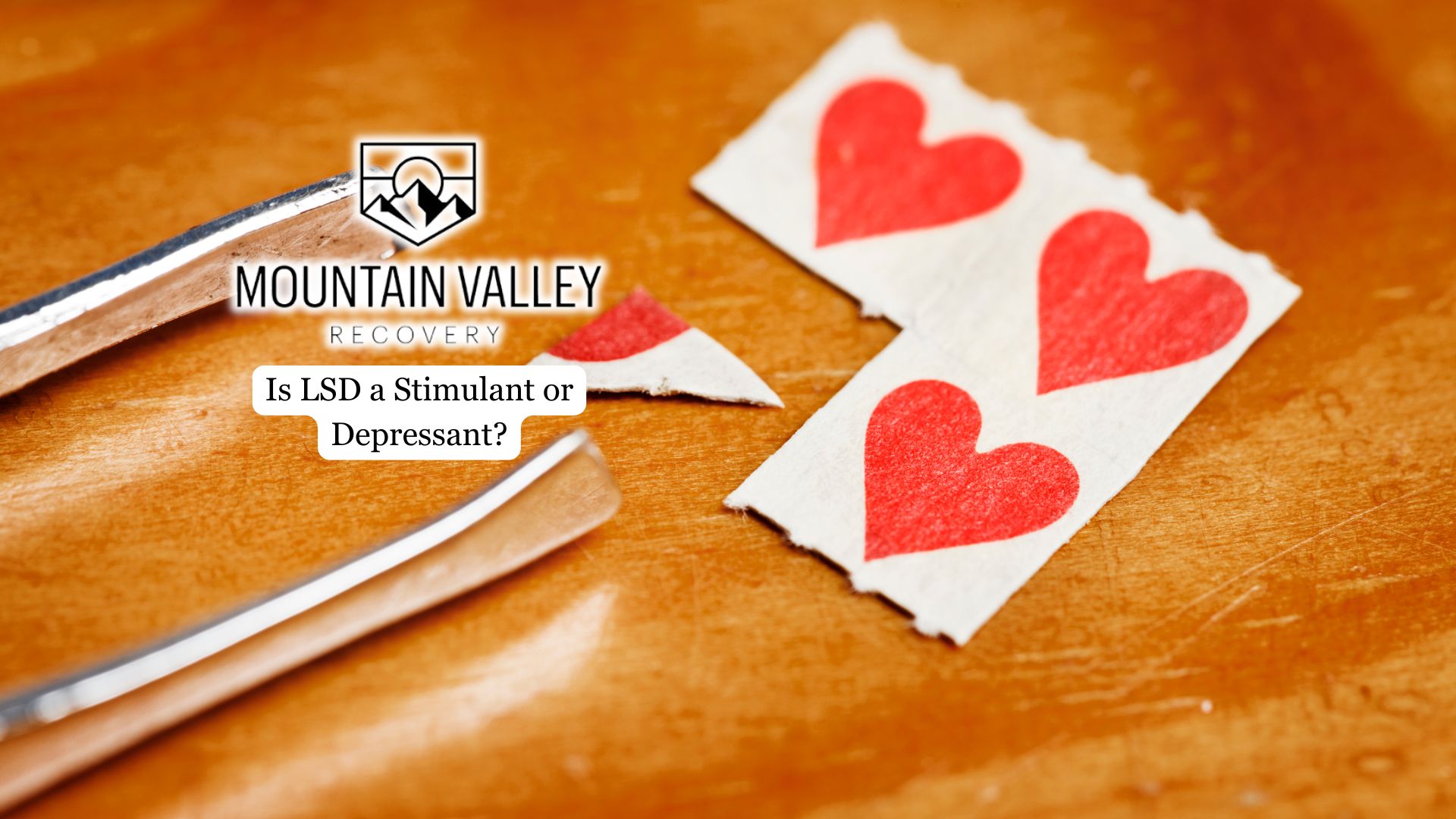LSD is notable among mind-altering substances for its significant impact on perception, cognition, and emotion. Despite its longstanding history and cultural prominence, there remains considerable uncertainty regarding how LSD is classified within the broader categories of psychoactive drugs.
In this article, we will understand LSD’s classification and effects, which are important for informed discussions about its use, both in recreational contexts and in more controlled environments where it is being researched for therapeutic potential.
Understanding Drug Classifications
To determine whether LSD is classified as a stimulant or depressant, it’s essential to understand the fundamental categories of drugs.
Stimulants
Stimulants, such as cocaine and amphetamines, are characterized by their ability to enhance energy, alertness, and heart rate by accelerating brain function and various bodily processes.
Depressants
Depressants, such as alcohol and benzodiazepines, slow down brain activity, which can lead to feelings of relaxation and drowsiness by inhibiting central nervous system function.
Hallucinogens
Hallucinogens are a class of drugs that cause profound distortions in a person’s perceptions of reality. These substances can alter thinking processes, mood, and sensory experiences, often resulting in hallucinations or altered states of consciousness.
Unlike stimulants and depressants, hallucinogens primarily interact with serotonin receptors in the brain, rather than dopamine or GABA receptors, which are typically targeted by stimulants and depressants, respectively.
If you or someone you care about is struggling with LSD or any other substance use, or simply looking for clarity, don’t hesitate to connect with medical professionals or addiction specialists. They can help you understand the risks and effects, and guide you toward the support you need for recovery.
What is LSD?
LSD, or lysergic acid diethylamide, is a semisynthetic compound that originates from ergot alkaloids present in the fungus Claviceps purpurea. This substance is categorized as a powerful psychedelic and is primarily taken orally, either in liquid form or on blotter paper.
LSD works by binding itself to serotonin receptors in the brain, leading to significant changes in perception, mood, and consciousness.
Users of LSD may experience a range of effects, including visual and auditory hallucinations, a distorted sense of time, and heightened emotional states. The duration of these effects can vary, typically lasting between 6 and 12 hours, and is influenced by the dosage consumed.
LSD Classification
LSD falls into a distinct category known as hallucinogens. This class of drugs primarily alters perception and can induce hallucinations, as well as modify thoughts and mood.
While LSD isn’t classified as physically addictive, it can evoke intense psychological responses, which may be difficult for some users to manage.
Given the potential for profound psychological experiences, it’s essential for individuals to be informed about the risks and consequences associated with the use of LSD and other psychedelic substances.
Why Do People Take LSD?
People turn to LSD for a variety of reasons, including its powerful ability to alter perception, mood, and thought. Many users seek LSD for recreational purposes, drawn by its psychedelic effects that can induce vivid hallucinations and a sense of expanded consciousness. Others are motivated by spiritual or self-exploratory goals, as LSD has been reported to facilitate profound mystical or insightful experiences that help individuals better understand themselves and their place in the world.
Emerging research highlights LSD’s potential therapeutic benefits, such as reducing anxiety, depression, and addiction, which attracts those looking for alternative treatments. Overall, the appeal of LSD lies in its capacity to provide new perspectives, creative inspiration, and emotional insights beyond ordinary experience.

Effects of LSD
The effects of LSD are complex and can vary significantly among individuals. These effects can generally be categorized into psychological and physical experiences.
Psychological Effects
Users may experience vivid visual and auditory hallucinations, as well as alterations in their perception of time and reality. Additionally, mood alterations can occur, ranging from feelings of euphoria to anxiety or paranoia. These psychological effects underscore the influence of LSD on mental processes.
Physical Effects
LSD can lead to a range of physiological reactions, including dilated pupils, increased heart rate, elevated blood pressure, and tremors. Users may also report an increase in energy levels.
While some of these physical outcomes may resemble those caused by stimulant substances, it’s critical to note that LSD primarily acts on serotonin receptors in the brain, rather than on dopamine receptors, which are typically associated with stimulant drugs.
The unique hallucinogenic properties of LSD distinguish it from many other substances, making understanding its effects and potential risks important for users and researchers alike.
Risks and Long-Term Effects
Short-term effects can include “bad trips,” which may be characterized by significant anxiety, paranoia, and compromised judgment. Additionally, LSD can lead to physical risks such as increased heart rate and elevated blood pressure.
In terms of long-term effects, some users may experience persistent psychosis or hallucinogen persisting perception disorder (HPPD). HPPD is a condition in which individuals continue to have visual distortions or other perceptual changes long after ceasing the use of the drug.
While LSD isn’t known to cause physical dependence, the psychological risks it poses shouldn’t be overlooked.
Final Thoughts from Mountain Valley Recovery
LSD is classified as a hallucinogen rather than a stimulant or depressant. It primarily functions by interacting with serotonin receptors in the brain, leading to alterations in perception and mood. While some users report positive experiences, such as euphoria, it is important to note that LSD can also lead to feelings of anxiety and other adverse effects.
At Mountain Valley Recovery, we understand the powerful effects hallucinogens like LSD can have on the mind and body. Our men-only inpatient rehabilitation program offers a safe and structured environment where healing begins. With cutting-edge treatment and a brotherhood of support, we’ll help you reclaim control, restore balance, and rise above addiction.





